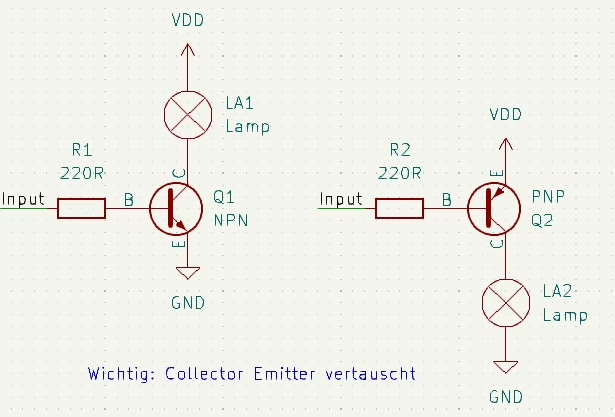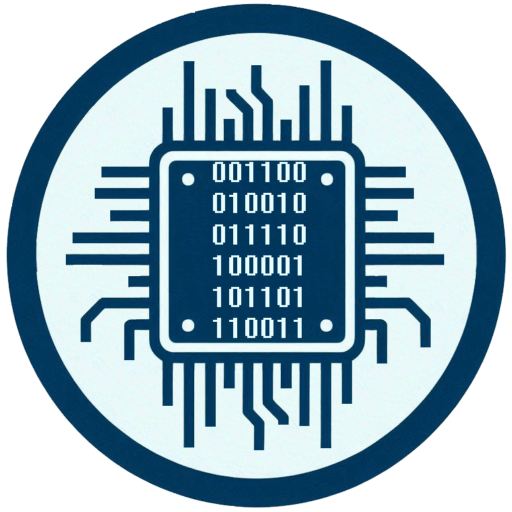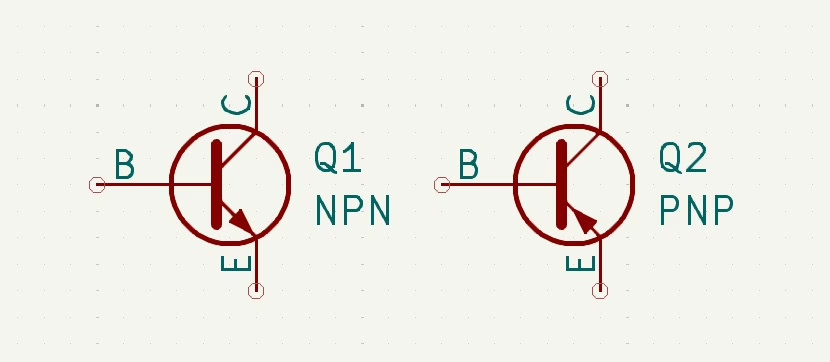Transistors explained simply - Understanding & using NPN vs. PNP correctly
-
16. May 2025
Transistors are real all-rounders in electronics. Whether as switches, amplifiers or signal converters - they can be found in almost every circuit. But many beginners ask themselves: What is the difference between NPN and PNP transistors - and when do you use which one?
In this article I will show you how transistors work, how NPN and PNP differ, how to connect them , and what you should pay attention to when using them. Everything is practical, easy to understand and without unnecessary technical jargon.
What exactly is a transistor?
A transistor is an electronic component, that can switch or amplify voltage. It can be thought of as an electronic valve: A small control variable (at the base) controls whether current flows between two other connections (collector and emitter).
In classic bipolar technology (BJT = Bipolar Junction Transistor) there are two types:
NPN-Transistor (more often, “current-controlling”)
PNP-Transistor ( reverse to the NPN)
Design & connections: NPN vs. PNP transistors
| Connection | Function |
|---|---|
| Base | Control input (low current is sufficient) |
| Collector | “Load” input (coming from supply) |
| Emitter | Output to ground (NPN) or to positive conductor (PNP) |
Difference NPN / PNP transistors:
| Characteristic | NPN | PNP |
|---|---|---|
| Typical application | Switch to ground | Switch to positive |
| Basic control | Positive (against emitter) | Negative (against emitter) |
| Current flow | C → E | E → C |
| Switching situation | Switches when Base > Emitter | Switches when Base < emitter |
| Symbol | → (arrow points away from the emitter) | ← (arrow points to the emitter) |
Practical example: NPN transistor as a switch
The NPN is the standard transistor for microcontroller circuits:
Load (e.g. LED, relay) is applied +V
Collector of the transistor to the other side of the load
Emitter to GND
Base via a resistor to a digital output
→ When the microcontroller outputs “HIGH”, the transistor conducts - the load is switched on.
When to use PNP transistors?
A PNP transistor is used if you prefer to switch a load to GND - e.g. for:
Power supply of modules with common ground potential
Circuit protected against polarity reversal (e.g. high-current branches)
⚠️ Important: The control logic is “inverted” here - the transistor switches when the base is lower than the emitter (e.g. pulled to GND).
Typical NPN / PNP transistors (standard types)
| Type | Design | Type | Note |
|---|---|---|---|
| BC547 | TO-92 | NPN | Classics for circuits |
| BC557 | TO-92 | PNP | PNP counterpart to the BC547 |
| 2N2222 | TO-92 | NPN | Robust, universal |
| BD139 | TO-126 | NPN | Higher performance |
| TIP120 | TO-220 | NPN (Darlington)* | For higher currents |
*Darlington circuits will be explained in detail in a future article.

Find transistors, here in the store.
Conclusion: NPN vs. PNP - it all depends on the current flow
The most important difference between NPN and PNP is the direction of current flow and the type of control. NPN transistors are more common in practice as they can be easily combined with digital circuits and GND-related logic.
You need PNP transistors if you want to switch to ground or have special power supply conditions.
Once you have understood the difference, you can use transistors in a targeted and safe way - as switches, amplifiers or control elements.

